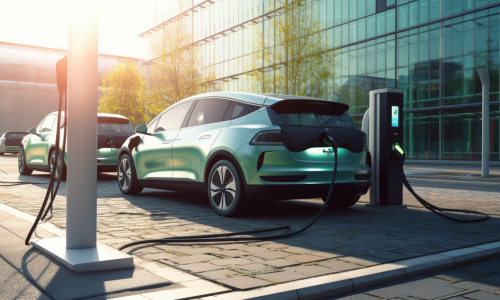Polish cities are becoming the heart of electromobility development, the latest data confirms. As many as 75% of electric cars in Poland are registered in cities with more than 50,000 residents. The same urban centers are home to 56% of all publicly available charging stations in the country. These are impressive statistics that show the growing popularity of electric means of transportation. However, according to a report by the Polish Society for New Mobility (PSNM), compiled in cooperation with Volvo Car Poland, the development of charging infrastructure in Poland still faces many challenges – especially outside of large agglomerations.
Electromobility in cities: Leaders on the Polish map
Among Polish cities, the largest agglomerations are leading the way, offering increasingly better conditions for electric drivers. In Silesia, the numbers speak for themselves:
- Katowice – 196 DC/AC charging points,
- Częstochowa – 133 points,
- Zabrze – 113 points,
- Gliwice – 111 points,
- Sosnowiec – 104 points.
In these cities, infrastructure availability is a key factor supporting the development of electromobility. Facilitating the use of electric cars translates into more users. The cities are drivers of change, with electromobility ceasing to be a trend and becoming an everyday reality.
Problems outside the cities – electromobility on the curve
Outside the cities, however, electromobility is encountering considerable problems. Charging infrastructure outside highways and freeways is severely limited. Lack of access to chargers in smaller towns and cities effectively deters potential buyers of electric cars. For many people who plan to switch to an electric car, the lack of an adequate charging network outside cities can be a decisive obstacle.
This shows that the development of charging infrastructure must go hand in hand with the promotion of electromobility in less urban areas. Only in this way can electromobility become a real alternative to internal combustion cars throughout Poland, and not just in large metropolitan areas.
Charging infrastructure: What’s standing in the way?
As the authors of the PSNM report point out, the current process of expanding charging infrastructure in cities faces many barriers. These problems are both technical and administrative, making new investments time-consuming and expensive to implement.
Among the biggest challenges are:
- Lengthy agreement procedures – Charging station operators indicate that administrative paperwork is too time-consuming, which delays the implementation of investments.
- Architectural requirements – In many cities, the current regulations are unsuitable for the market. As a result, the introduction of fast charging (DC) stations becomes impossible in practice.
- Varying rental rates – The cost of leasing land for charging stations varies dramatically from city to city. In Rzeszow they amount to PLN 50 per square meter per year, while in Szczecin they are as high as PLN 18,542. Such huge differences make investments unprofitable in many locations.
What steps should be taken to accelerate development?
Experts agree that the pace of expansion of charging infrastructure in Poland needs to be dramatically accelerated. The PSNM report highlights several key areas where changes are needed:
- Simplification of administrative procedures – Reducing the time it takes to obtain permits is fundamental to the implementation of new investments.
- Standardizing lease rates – Setting rates close to market costs will allow investors to make decisions more predictably.
- Developing the network outside of major cities – Priority should be given to providing an adequate number of charging points in smaller towns, in rural areas and along local roads.
Summary
Poland’s electromobility is developing rapidly, with cities such as Katowice, Częstochowa and Gliwice serving as models for other regions. However, without a comprehensive approach to the development of charging infrastructure, both in and outside cities, it will be difficult to achieve the full potential of electromobility.
The challenges are significant, but the benefits of investing in charging infrastructure are even greater – from improving air quality to developing innovative technologies and creating new jobs. Electromobility is the future, but its pace of development depends on decisions made today.





